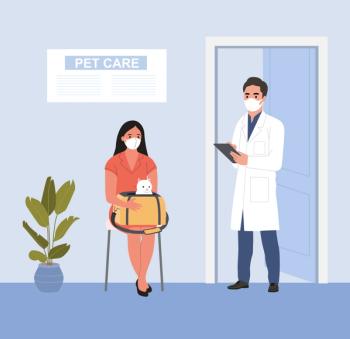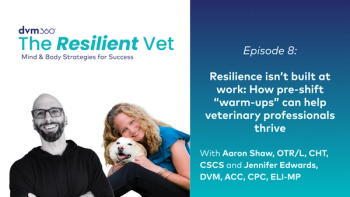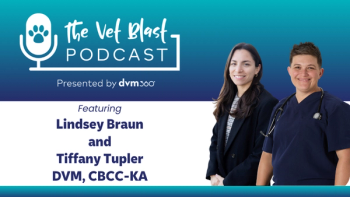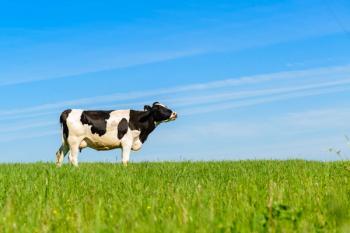
Constipation in cats (Proceedings)
Constipation is a frequent complaint middle aged to older cats. In some cases the disease becomes refractory enough to treatment that either subtotal colectomy or euthanasia have to be considered.
Constipation is a frequent complaint middle aged to older cats. In some cases the disease becomes refractory enough to treatment that either subtotal colectomy or euthanasia have to be considered. The problem is thought to be caused by underlying metabolic problems in some patients such as kidney disease or other issues that generally result in dehydration. These are however relatively rare and do not generally cause clinical signs. Most clinical cases of recurrent constipation/obstipation are idiopathic in nature. Pelvic abnormalities and strictures represent some of the occasional causes of this problem that can be identified with work up as is nerve trauma to the sacral region. Megacolon represents the extreme manifestation of obstipation/constipation. In cats with megacolon abnormal smooth muscle cell function of the colon has been detected though this was in cats with advanced disease so it is uncertain if this was truly the cause or a manifestation of chronic constipation.
The consequences of constipation/obstipation usually are metabolic derangements. With prolonged problems endotoxemia and even death can occur. Long term this can also lead to megacolon, though in many cases megacolon can occur without a clear history of constipation/obstipation.
Treatment
A variety of treatments have been recommended for the constipated/obstipated cat as well as the cat with megacolon.
Initial management
When initially presented relieving the constipation is indicated. This can be done with a variety of ways, whereby manual disimpaction is the least "nice" of the options and should be reserved for refractory cases. Enemas can often be helpful to help to moisten dried out feces. In general 5 to 10 ml/kg of warm water can be given as an enema. Alternatively smaller volumes of DSS (5 to 10 ml total dose) can be given, though this is more irritating. This can be supplemented with oral lactulose and fluid therapy to maximize efficacy.
Recently we have adapted the use of PEG solutions administered via NE tube to help relieve obstipated/constipated cats. This is similar to methods used in humans. We give PEG solution as a slow trickle via NE tube (4 to 18 hours). This generally results in defecation within 6 to 12 hours. Obviously before embarking on this therapy it is wise to rule out obstructions of the GI tract that would make passing feces difficult or impossible. To date we have not had any significant adverse side effects and have not had to resort to manual disimpaction. In some cases enemas were given concurrently, thought this does not appear to be necessary. There is always concern about giving PEG solutions to cats as oxidative injury to RBCs could occur, though we have not documented this to date.
Long term management
Ultimately in those cats where the problem constantly recurs, surgical intervention may be needed. Medical therapy (life-time) can in many cases avert the need for surgery or significantly delay the need for surgery.
Diet is an important part of management and it is difficult to be sure which diet is best in each individual case. Increased fiber and low residue diets are the most popular.
Fiber has been recommended for many years. This can be a psyllium product (Metamucil 1-4 tsp per meal), canned pumpkin or wheat bran. Fiber has been shown in humans to be only moderately effective as a laxative.
Lactulose is also a very good option for maintaining soft stools. The dosage is 0.5 ml/kg two to three times daily. Dosage is adjusted to obtain the stool quality desired. In humans this product is known to cause flatulence and GI cramping. Recently PEG containing laxatives (Miralax) have been recommended for use in cats. In humans PEG laxatives have been shown to be safe and effective with few adverse side effects. Rarely severe hyponatremia has been reported because of SIADH. These products have been recommended in cats though there is no published data showing efficacy or safety. Our own studies show that PEG is well tolerated in healthy cats and consistently leads to very soft stools. Dosage needed is relatively variable between cats so individual dose titration is a necessity. Starting off at ¼ teaspoon twice daily is a good starting point.
Prokinetic medications are vital to managing the chronically impacted cat. Cisapride (2.5 to 5 mg/cat q8 to 12 hours) has helped many cats avoid surgery for megacolon. It can be obtained from many compounding pharmacies. Other medications are available as well, however in most cases Cisapride is adequate.
References
Candy DCA, Edwards D, Geraint M. Treatment of faecal impaction with polyethylene glycol plus electrolytes (PGE + E) followed by double-blind comparison of PEG + E versus lactulose as maintenance therapy. Journal Pediatric Gastroenterology and Nutrition 2001; 43:65.
Ramkumar D, Rao SSC. Efficacy and safety of traditional medical therapies for chronic constipation: systematic review. Am J Gastrorenterol 2005;100:936.
Washabau RJ, Holt DE. Diseases of the large intestine. In Ettinger SJ, Feldman EC (eds): Textbook of Veterinary Internal Medicine, 6th ed. St. Louis, Elsevier, 2005.
Newsletter
From exam room tips to practice management insights, get trusted veterinary news delivered straight to your inbox—subscribe to dvm360.




